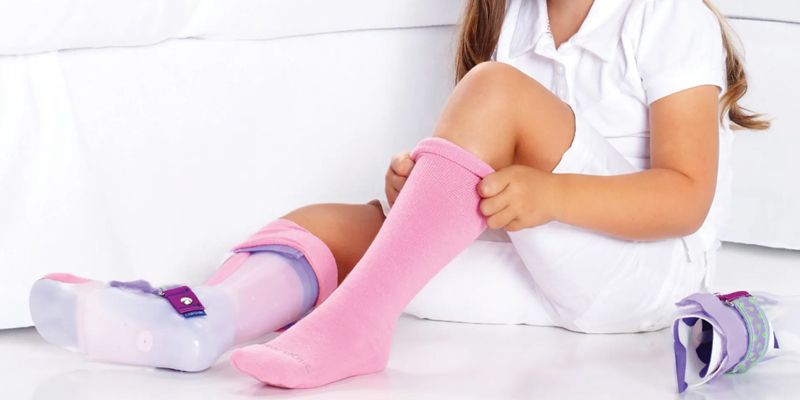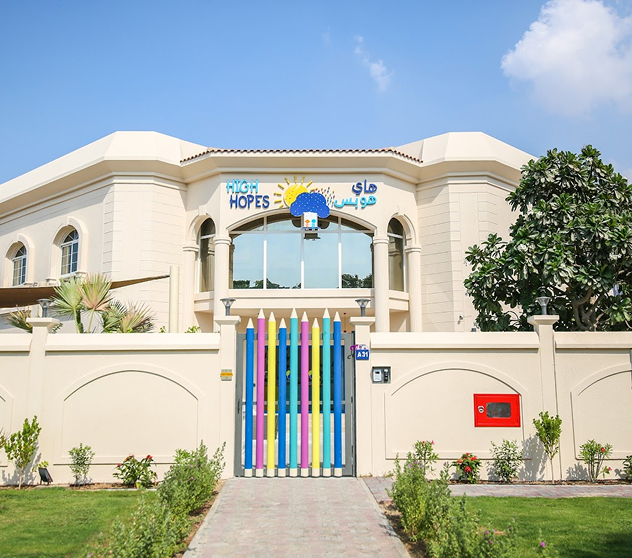The choice between orthopaedic shoes and lower limb orthoses for children with movement disorders is widely discussed in the clinical setting, leaving parents and caregivers confused about the indication and use of this equipment. Both devices use external forces to modify the neuromuscular and musculoskeletal systems’ functional and structural characteristics, but with variated degrees of support and, therefore, different indications.
The use of the correct footwear is essential for toddlers and children as they grow up and their bones, joints and muscles can be modelled easily by the external forces, If the wrong footwear is worn for prolonged periods and during body loading, as when standing and walking, it may cause damage and lead to orthopaedic problems later in life.
According to the Association of Paediatric Chartered Physiotherapists (APCP, 2019), children’s regular shoes should support the foot, particularly around the heel. A firm heel cup means that the shoe or sandal should have a solid back. Sandals need an enclosed heel. The front of the shoes should be wider than at the heel. It is recommended to avoid shoes with pointy toes as these can restrict the movement at the toes, especially if your child has broad feet.
The children’s orthopaedic footwear design comprises special details distinguished from regular shoes (Skirmont et al., 2018). That specification will be determined on an individual basis and specifically with the purpose to support or alleviate mobility impairment in childhood, with subgroupings of corrective, accommodative and functional shoes dependent on the intended therapeutic role. (Hill, Healy and Chockalingam, 2019)
For kids with neurological disorders, when the use of orthopaedic shoes is not sufficient to provide the ideal joint position, the use of customised ankle and foot orthoses (AFOs) has the primary objective of promoting biomechanical alignment. It allows proprioceptive information at aligned joints and places the muscles in ideal length for activation. Thus, the orthoses can support excessive or insufficient muscle activity which leads to deformities and changes in standing posture and walking pattern. On the other hand, the continued use of AFOs can cause the deprivation of tactile sensory stimuli on the feet and restrict the sural triceps muscles’ active contraction. It may accentuate the calf muscle weakness seen in individuals with cerebral palsy. However, this does not mean that AFOs are contraindicated for these children, but that the physiotherapeutic strategies should stimulate the active plantar flexion and foot intrinsic muscles activation. The child should also be oriented to stand and walk without shoes on different terrains and varied surfaces for a short period throughout the day.
The clinical diagnosis and the causes of movement disorders, as well as their impact on the child’s functional abilities, should be widely considered in the assessment and planning of orthopaedic footwear or orthoses for children with neurologic disorder. Different clinical conditions directly interfere with footwear indications and the proposed therapeutic plan and expectations generated by both the child and their family members. (Toledo and Metzker, 2013)
The decision to use orthopaedic footwear or lower limb orthoses should also be based on a careful assessment of the range of motion of the joint, foot alignment, voluntary control of lower extremity movements, the child’s functional level, the demands of the task and the characteristics of the environment and the family expectation. Understanding the biomechanics of the joints involved, especially during normal gait, is also of fundamental importance during this decision. The rehabilitation team must analyse strength, existing deformities, proprioception, tonus and soft tissue sensitivity. In the indicated cases, the gait analysis must be included. (Toledo and Metzker, 2013)
As we can see, although the footwear choice plays an essential role in the treatment of some children with neurological impairment, this intervention cannot be performed in isolation. It requires comprehensive therapeutic planning with an integrated interdisciplinary approach including the orthopaedic doctor, physiotherapist, orthotist and the child’s family and caregivers. The time of use of the therapeutic shoes or orthoses throughout the day and their association with activities or positions depends on each child’s demands and recommended by the rehabilitation team.
Indications of therapeutic footwear for children with movement disorders.
- To prevent and correct spine, pelvic and ankle and foot dynamic deformities.
The most frequent indication for therapeutic shoes is to prevent and correct dynamic deformities when the muscles have not yet shortened, and the joints have the complete passive range of motion. The orthopaedic footwear and orthoses can also accommodate a leg length discrepancy or unequal shoe size for children with congenital musculoskeletal or neuromuscular disorders, thus preventing spine and pelvic overload asymmetries. (Hill, Healy and Chockalingam, 2020).
Some orthoses can be indicated for sleep positioning (e.g., nocturnal braces), associated or not with spasticity treatment procedures, such as after neuromuscular block and orthopaedic surgical interventions. Other orthoses can be recommended to progressively increase the joint range of motion by keeping the muscles in a stretch position. However, orthoses’ use has no effect on the correction of fixed skeletal deformities that have a surgical indication. Still, the changes can be accommodated by them when there is no possibility of surgical intervention. - To improve the base of support and stability to postural transitions and standing.
The therapeutic footwear and orthoses improve the base of support and body stability during functional activities standing and walking. The use of AFOs, for example, can be indicated to provide the flattened feet and a stable base of support standing, favouring the balance control and also the qualitative performance of postural transitions such as sit to stand. The use of AFOs can be associated with other devices, such as hip and knee stabilizers, called HKAFOs and KAFOs, respectively, in order to favour the optimal alignment in the stand position. - To improve walking style and efficiency.
When considering the functional level of children with movement disorders, the demands of the task, and the environment’s characteristics, it is often observed that the locomotion pattern presented by them represents the best possible solution. However, some of these functional solutions can put them at risk for further biomechanical changes and gait dynamics impairment. In this context, orthoses are positioning and functional aid equipment often used as a resource in these children’s gait treatment. (Toledo and Metzker, 2013) The use of therapeutic footwear or orthoses aims to restore the prerequisites for biomechanical alignment and favour walking with less postural compensation and energy expenditure.
It is important to emphasize that, according to Skirmont et al. (2018), it is improper and unacceptable to use orthopaedic shoes to prevent the occurrence of deformities. It is necessary to strictly use therapeutic shoes according to the orthopaedic doctor and physiotherapist’s recommendation.
Implementation of the therapeutic shoes’ strategies
Orthoses are widely used as a therapeutic resource to increase the participation and assist in the children with neuromotor disorders insertion in family and, especially, school environments.
In general, traditional orthoses have a recommendation of prolonged use and should be incorporated into the daily routine of these children. Regardless of the AFO used, the proposed activity must be considered to choose to use the orthoses. Functional performance during free activities, such as a playground, swimming pool, physical education classes and playing on the floor, must be evaluated. In some of these situations, removing the orthoses can facilitate the development of the proposal. Ground activities, such as kneeling, half-kneeling, hands-and-knees position and postural transitions on the floor, must be performed without orthoses because such activities require mobility of the ankle. Some orthoses can have intermittent use, being decided according to the family and school routine, such as AFOs and extensor splints, which promote standing and can be included during playful or educational activities, as long as there are assistance and supervision for the quality and safety of this posture. (Toledo and Metzker, 2013)
The use of orthopaedic shoes or orthoses, when indicated adequately by the rehabilitation team, through alignment and proprioceptive information provided by these resources, contribute to increasing postural stability, functional motor repertoire, self-confidence and participation of children with movement disorders. For this reason, they deserve full attention from the family and the rehabilitation team.
To learn more about therapeutic shoes and orthoses, contact our team of physiotherapists. We will be happy to help you choose the most appropriate therapeutic strategies for your child.




